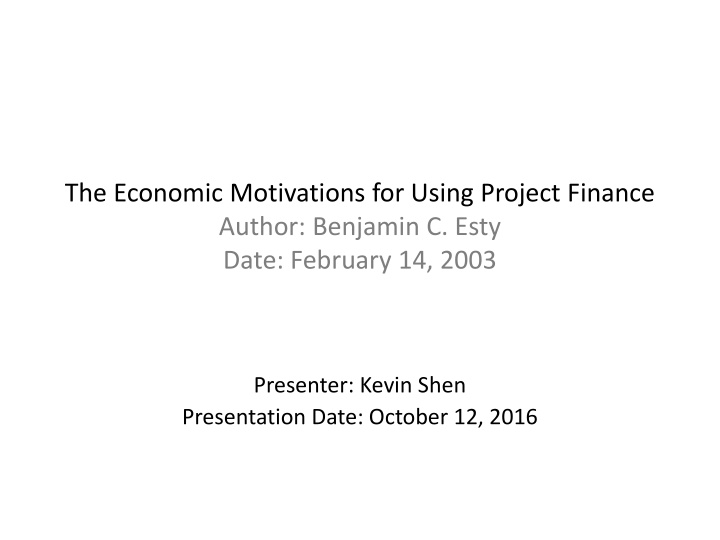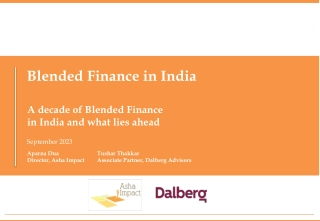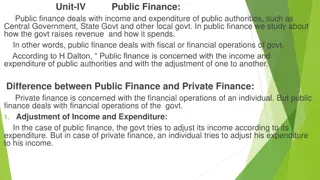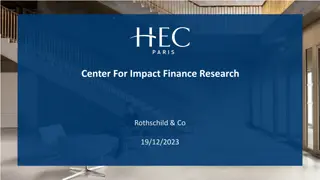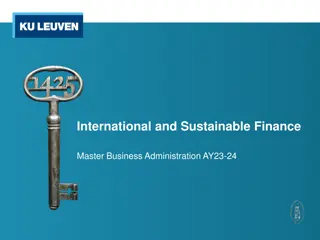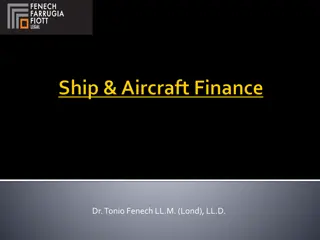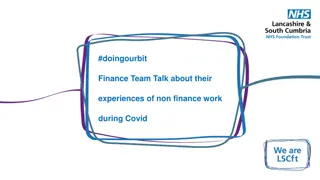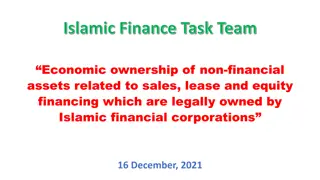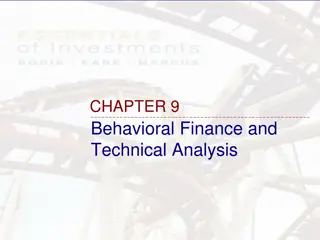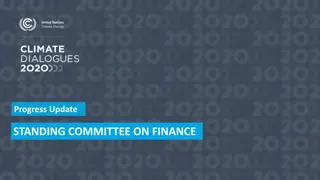Economic Motivations for Using Project Finance
This presentation explores the economic motivations behind project finance, covering topics such as Modigliani and Miller's Proposition, capital structure irrelevance, project finance financing products, market size comparisons, and project structure components.
Download Presentation

Please find below an Image/Link to download the presentation.
The content on the website is provided AS IS for your information and personal use only. It may not be sold, licensed, or shared on other websites without obtaining consent from the author.If you encounter any issues during the download, it is possible that the publisher has removed the file from their server.
You are allowed to download the files provided on this website for personal or commercial use, subject to the condition that they are used lawfully. All files are the property of their respective owners.
The content on the website is provided AS IS for your information and personal use only. It may not be sold, licensed, or shared on other websites without obtaining consent from the author.
E N D
Presentation Transcript
The Economic Motivations for Using Project Finance Author: Benjamin C. Esty Date: February 14, 2003 Presenter: Kevin Shen Presentation Date: October 12, 2016
Agenda Modigliani and Mill s Proposition Project Finance Analysis of Economic Motivations Agency cost: ownership and control Under-investment: debt overhang Under-investment: incremental distress costs Author Conclusion My Opinion
Modigliani and Mills Proposition Capital-Structure Irrelevance In a perfect market with no frictions, firm value is solely determined by its earning power and by the risk of its underlying assets, independent of its financing choices Assumptions: No taxes (corporate, personal) No transaction costs No bankruptcy costs No agency costs (ownership/control, debt/shareholders) Information symmetry
Project Finance Financing Product One of the most important financing vehicles for investments in the natural resources and infrastructure sectors such as power plants, pipelines, toll roads, airports, rail roads, and telecommunications systems
Project Finance Market Size Comparison Market Size of Various Financial Products $BN 500 434 450 400 354 350 300 240 250 200 150 100 68 34 50 0 IPOs Project Finance Leasing ABSs Corporate Debt Source: paper, data as of 2001
Project Finance Project Structure Components Organizational Structure: legally independent from the sponsors; secured debt, a corporate obligation, does not Capital Structure: very high leverage (~70%) compared to public corporations (~30%) Ownership Structure: highly concentrated debt (~1-4 bank loan syndicates) and equity ownership (~1-3 sponsors) structures; bank debt is non-recourse Contractual Structure: many parties (~10-1000+) involved in a vertical chain; four major project contracts are Equipment, EPC, O&M, and Purchase Agreement
Project Finance Typical Project Structure
Project Finance Costs & Benefits of Project Finance Timing: 6-18 months more Costs: significant transaction costs (~3-5%), Klein, So, and Shin (1996) Spreads: 50-400 bps more (no cross-collateralization on cash flows and assets), Lewellen (1997) Deadweight costs (DWC): transaction, agency, distress, information, taxes, etc. Framework of analysis is created below based on Myers (1974) adjusted present value (APV) methodology: Investment value = (project value) (project DWC) (incremental firm DWC)
Project Finance Motivation 1: Ownership/Control No mergers and acquisitions, takeover, or liquidation market Project company equity is privately held by the sponsors Projects generally have construction period and limited lives (not worth much, and decreasing net asset value) Remark: when opportunity for incentive conflicts exists, it might be worth the transaction costs to minimize agency costs Cash Flow Waterfall limits managerial discretion Waterfall prioritizes claims on cash flows Eliminates conflicts between debtholders and equityholders regarding distribution and re-investment of cash flows and restructuring in distressed situations Remark: simplifies the situation of legal proceedings when project goes under water compared to fighting internally at the sponsor level
Project Finance Motivation 1: Ownership/Control Concentrated ownership in debt and equity Bank debt instead of bond allows sponsors to gain the benefits of creditor monitoring, Diamond (1984) Unique board appointed by the sponsors rather than a board membership for public corporations High leverage Project debt repayment is solely dependent upon project cash flows rather than through corporate cash flows Short term bank debt (miniperm, ~3-5 years) Remark: force managers to focus on performance and managing projects
Project Finance Motivation 2: Debt Overhang Debt overhang is when a corporation has existing debt so great that it cannot borrow more money, even for positive NPV projects Project finance helps Highly leveraged firms avoid this opportunity cost of underinvestment Moderately leveraged firms to raise additional funds without becoming highly levered Allows sponsors to preserve scarce corporate debt capacity, maintain current credit rating, and borrow more cheaply compared to straight new corporate debt
Project Finance Motivation 2: Debt Overhang Secured debt reduces leverage-induced underinvestment by allocating returns to new capital providers, Stulz and Johnson (1985) Similar logic, Berkovitch and Kim (1990), John and John (1991), Flannery (1993) showed that project finance achieves the same result through separate incorporation and non- recourse debt Remark: project finance is more effective than secured debt because it eliminates all recourse back to the sponsors
Project Finance Motivation 3: Distress Costs Reduce the potential collateral damage that a high-risk project can impose on the sponsors Project finance can dramatically reduce the potential for risk contamination Remark: for investments with high expected distress costs, project finance may reduce the incremental distress costs to the point where the total combined NPC is positive
Project Finance Conclusion Relatively new yet large field of finance that lacks academic research Project finance reduces the net cost of financing particular assets through three economic motivations: Agency costs reduction Debt overhang costs reduction Distress costs reduction
Project Finance My Opinion Rudimentary research on project finance that shed lights on this growing field of finance from a risk management perspective Good: referred to a lot of research in the paper Bad: lack of statistical information to back up the results Further research: paper focused on the project level, further research into the cost of borrowing at sponsor level could be proven useful in practice
